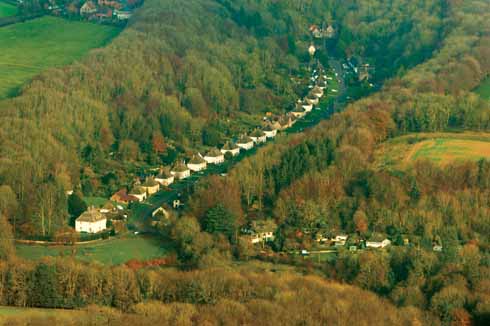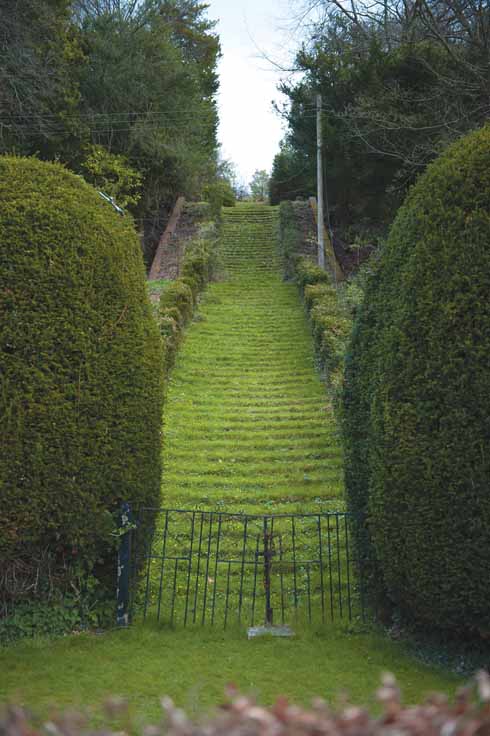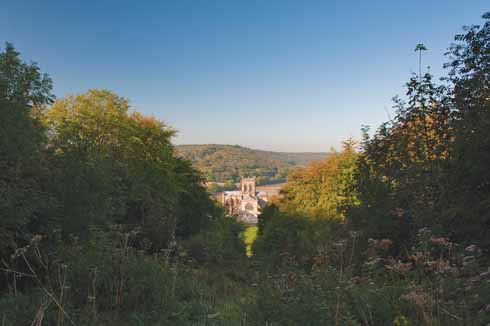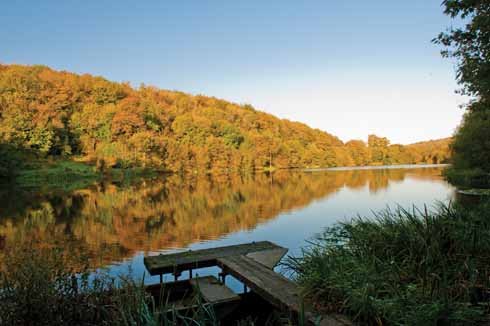Milton Abbey and Capability Brown
Lindsay Neal looks at the landscape designer's vision for an iconic Dorset view and looks forward to an exhibition celebrating the 300th anniversary of his birth
Published in June ’16
Lancelot ‘Capability’ Brown may have struggled to move mountains, but hills, valleys, rivers, streams, woodlands and lakes were well within his considerable powers. Famously, he’s the man who remodelled the landscape of 18th-century England, creating new features in the countryside and making the rest of it easier on the eye.
In his 32 years as a famed ‘place maker’, between 1751 and his death in 1783, it is estimated he was responsible for between 250 and 270 sites across England and Wales, moving between projects on horseback or in a carriage on roads we would barely recognise as such. About 160 of those sites survive and are considered worthy of inclusion in the Capability Brown Festival this year to mark his tercentenary. Dorset is home to two of them – Sherborne Castle Gardens and Milton Abbey, the festival’s regional hub and home to a major new multi-media exhibition.
‘We want to do something really special to commemorate Capability Brown’s genius and also to celebrate the amazing, extraordinary history of Milton Abbey and the surrounding estate,’ says local organiser Michael McAvoy. ‘This is a wonderful opportunity to experience and enjoy the landscape he created, but also to find out about Milton Abbey, which I think it’s fair to say has suffered in recent years in terms of public awareness.’
The Milton Abbey estate grew up around the church founded in 934AD by King Athelstan, possibly in penance for his part in the death of his brother. From the time of the Normans it flourished as a Benedictine monastery and in 1252 King Henry III granted a charter to the town of Middleton that had grown up around the abbey. After the Dissolution of the Monasteries in 1539 the estate was sold to John Tregonwell and, following several changes of ownership, in 1752 was bought by Jeffrey Damer, Lord Milton and later the 1st Earl of Dorchester, who set about re-modelling the entire estate. In 1764 he engaged Capability Brown to design the 500-acre landscape park, featuring parkland, ornamental plantations, woodlands, agricultural land and, to the south-east, an artificial lake where the town of Middleton once stood. When Lord Milton decided the view from his grand new mansion would be greatly improved by the addition of a lake, he had the town of Middleton demolished.
Capability Brown was duly engaged to design a new village called Milton Abbas – often called Britain’s first new town – to be built in Luccombe Valley. Building began in 1773 and finished in 1780, by which time the almshouses had been dismantled and rebuilt in the new village and timbers and stone from the Abbey farmyard’s tithe barn were incorporated in St James Church. Crucially, most of Middleton’s 500 or so residents had been moved over the hill and out of sight.
‘It wasn’t Brown’s idea to remove Middleton, he was simply fulfilling his brief,’ says Michael. ‘There are very few plans for any of Brown’s work and none for Milton Abbey, so the only reason we know he designed Milton Abbas is because there is an entry for it in his account book – he was paid £100. Milton originally engaged Sir William Chambers but when they fell out he turned to Brown and it’s likely that Brown is responsible for the design of cottages snaking down the valley.’
Milton Abbas may have been as gentle to look at then as now, but it was a very different village from that of today. The 36 cottages would typically have each housed at least four families and in the 19th century it was reported that 36 people lived in one building.
‘What Brown did here was quite incredible,’ says Michael. ‘He didn’t have bulldozers and heavy machinery; he had ingenuity and men with picks and shovels. He may have started out as a gardener but by the time he finished, he had also become a designer, an engineer and an architect. If you walk the Delcombe Valley you can just make out the marks where he created one of several drives intended for guests to ride out on pleasure trips. Look over at Hilton village and you can see how he has framed the village with a band of tree planting – it’s quite incredible.’
Opening on 10 July, the Capability Brown exhibition at Milton Abbey will run until 21 August and feature a new commission by Royal Academician Stephen Farthing, as well as new works by landscape artist Tim Scott-Bolton, the result of two years spent painting Brown’s settings. Housed in the Abbey church and two school buildings, the displays will also include textile art from the Embroiderers’ Guild, a vast photographic exhibition and new work from eleven artists exhibiting with Dorset Visual Arts, as well as a new film about Brown’s work on the estate shot by noted cinematographer Tony Shearn with a commentary by Brown expert John Phibbs. Other attractions such as a computer game, geocaching and a fully interactive digital guided tour of the landscape with footage shot from drones aim to engage visitors of all ages.
‘There’s a feeling that Milton Abbey’s connection with Capability Brown is somewhat under-appreciated,’ says Michael. ‘Obviously the best-known sites like Chatsworth and Blenheim Palace are very used to coping with visitors, but John Phibbs puts Milton Abbey in the top ten of Brown sites and yet it is still a surprise to many.’
Happily, fate seems to have been on the side of the Abbey ever since Michael and others hatched a plan to stage a festival. ‘I was at Dorset County Hospital and was very struck by Stephen Farthing’s rendition of the Jurassic Coast that hangs by the south entrance; it’s called The Knowledge: Dorset, and was commissioned in 1998 by the hospital’s NHS Trust. I decided to find out more about the artist and ended up in an email conversation with him in which I asked if he would consider painting Brown’s landscape at Milton Abbey.
Bearing in mind he lives in Mexico City and lectures in New York and London, I was amazed when he said he would. He has visited a couple of times and I can’t wait to see his painting, which will be unveiled at the festival. Similarly with Tim Scott-Bolton: he got in touch and told me about his Capability Brown project and the book for which Prince Charles has written the foreword, and then offered me thirty pieces for the exhibition.’

Lancelot ‘Capability’ Brown. Portrait of Lancelot ‘Capability’ Brown, c1770-75, by Richard Cosway (1742-1821)_Private Collection_Bridgeman Images
Award-winning production company SpiderJAR, based in Wareham, has created new digital animations for the festival website. ‘We want to be informative, but we must also be entertaining,’ says Michael. ‘Capability Brown is as much about the 21st century as he is about the 18th century.’
Waste management company Viridor has donated £250,000 so that repair work on the Abbey church can begin, a grant that is being seen as a step in the right direction as Milton Abbey prepares a bid for Heritage Lottery funding for its awareness-raising project, the Big Stare. ‘The name comes from something Capability Brown said about the view from the top of the grass steps [see opposite page images]; it’s wonderful and we wish more people would come and enjoy it. Milton Abbey won’t suddenly be attracting 20,000 visitors a year like Sherborne Castle for instance, but at the moment numbers are well under 5000, which is a great pity. If the Big Stare is to be successful, we have to accept greater numbers, so that means better parking, better facilities, a shop, café, that sort of thing, but this is a major Dorset heritage site which suffers from a misapprehension that Milton Abbey is off-limits because of the school, and it isn’t.’
Milton Abbey is open 10.00-5.00, Monday to Sunday. For more information or for details of the exhibition, visit www.miltonabbey.org






